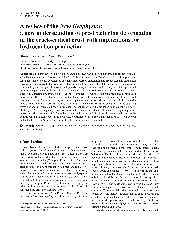摘要
This paper reviews a new understanding of shear-wave splitting (seismic-birefringence) that is a fundamental revision of conventional fluid-rock deformation. It is a New Geophysics with implications for almost all solid-earth geosciences, including hydrocarbon exploration and production, and earthquake forecasting. Widespread observations of shear-wave splitting show that deformation in in situ rocks is controlled by stress-aligned fluid-saturated grain-boundary cracks and preferentially orientated pores and pore-throats pervasive in almost all igneous, metamorphic, and sedimentary rocks in the Earth's crust. These fluid-saturated microcracks are the most compliant elements of the rock-mass and control rock deformation. The degree of splitting shows that the microcracks in almost all rocks are so closely spaced that they verge on fracture-criticality and failure by fracturing, and are critical systems with the "butterfly wing's" sensitivity of all critical systems. As a result of this crack-criticality, evolution of fluid-saturated stress-aligned microcracked rock under changing conditions can be modelled with anisotropic poroelasticity (APE). Consequently, low-level deformation can be: monitored with shear-wave splitting; future behaviour calculated with APE; future behaviour predicted with APE, if the change in conditions can be quantified; and in principle, future behaviour controlled by feed-back. This paper reviews our current understanding of the New Geophysics of low-level pre-fracturing deformation.
- 出版日期2008-2
- 单位中国地震局地震预测研究所
